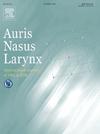Digital health technologies in swallowing care from screening to rehabilitation: A narrative review
IF 1.5
4区 医学
Q2 OTORHINOLARYNGOLOGY
引用次数: 0
Abstract
Objectives
Digital health technologies (DHTs) have rapidly advanced in the past two decades, through developments in mobile and wearable devices and most recently with the explosion of artificial intelligence (AI) capabilities and subsequent extension into the health space. DHT has myriad potential applications to deglutology, many of which have undergone promising investigations and developments in recent years. We present the first literature review on applications of DHT in swallowing health, from screening to therapeutics. Public health interventions for swallowing care are increasingly needed in the setting of aging populations in the West and East Asia, and DHT may offer a scalable and low-cost solution.
Methods
A narrative review was performed using PubMed and Google Scholar to identify recent research on applications of AI and digital health in swallow practice. Database searches, conducted in September 2024, included terms such as “digital,” “AI,” “machine learning,” “tools” in combination with “deglutition,” “Otolaryngology,” “Head and Neck,” “speech language pathology,” “swallow,” and “dysphagia.” Primary literature pertaining to digital health in deglutology was included for review.
Results
We review the various applications of DHT in swallowing care, including prevention, screening, diagnosis, treatment planning and rehabilitation.
Conclusion
DHT may offer innovative and scalable solutions for swallowing care as public health needs grow and in the setting of limited specialized healthcare workforce. These technological advances are also being explored as time and resource saving solutions at many points of care in swallow practice. DHT could bring affordable and accurate information for self-management of dysphagia to broader patient populations that otherwise lack access to expert providers.
从筛查到康复的吞咽护理中的数字健康技术:叙述性回顾
在过去二十年中,通过移动和可穿戴设备的发展,以及最近人工智能(AI)能力的爆炸式增长及其随后向卫生领域的扩展,数字卫生技术(dht)得到了迅速发展。DHT在消化学中有无数的潜在应用,其中许多在近年来都经历了有前途的研究和发展。我们提出了从筛查到治疗的DHT在吞咽健康中的应用的第一个文献综述。在东亚和东亚人口老龄化的背景下,吞咽护理的公共卫生干预措施日益需要,DHT可能提供一种可扩展和低成本的解决方案。方法利用PubMed和b谷歌Scholar对人工智能和数字健康在吞咽实践中的应用进行综述。2024年9月进行的数据库搜索包括“数字”、“人工智能”、“机器学习”、“工具”以及“吞咽”、“耳鼻喉科”、“头颈”、“语言病理学”、“吞咽”和“吞咽困难”等术语。主要文献有关的数字健康在饮食学纳入审查。结果综述了DHT在吞咽护理中的应用,包括预防、筛查、诊断、治疗计划和康复。结论随着公共卫生需求的增长,在专业医护人员有限的情况下,dht可能为吞咽护理提供创新和可扩展的解决方案。这些技术进步也被探索作为时间和资源节约的解决方案,在许多点护理在吞咽实践。DHT可以为更广泛的患者群体提供负担得起的、准确的信息,用于吞咽困难的自我管理,否则他们就无法获得专家服务。
本文章由计算机程序翻译,如有差异,请以英文原文为准。
求助全文
约1分钟内获得全文
求助全文
来源期刊

Auris Nasus Larynx
医学-耳鼻喉科学
CiteScore
3.40
自引率
5.90%
发文量
169
审稿时长
30 days
期刊介绍:
The international journal Auris Nasus Larynx provides the opportunity for rapid, carefully reviewed publications concerning the fundamental and clinical aspects of otorhinolaryngology and related fields. This includes otology, neurotology, bronchoesophagology, laryngology, rhinology, allergology, head and neck medicine and oncologic surgery, maxillofacial and plastic surgery, audiology, speech science.
Original papers, short communications and original case reports can be submitted. Reviews on recent developments are invited regularly and Letters to the Editor commenting on papers or any aspect of Auris Nasus Larynx are welcomed.
Founded in 1973 and previously published by the Society for Promotion of International Otorhinolaryngology, the journal is now the official English-language journal of the Oto-Rhino-Laryngological Society of Japan, Inc. The aim of its new international Editorial Board is to make Auris Nasus Larynx an international forum for high quality research and clinical sciences.
 求助内容:
求助内容: 应助结果提醒方式:
应助结果提醒方式:


